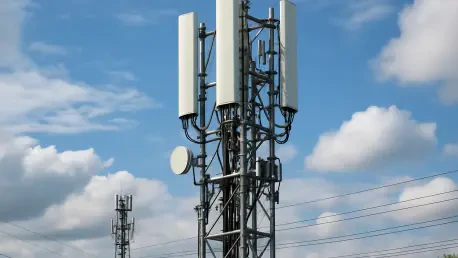In a startling revelation that has sent shockwaves through the telecommunications industry, researchers from the Singapore University of Technology and Design have uncovered a critical security flaw in 5G networks through a novel attack framework known as Sni5Gect. This sophisticated method allows attackers to intercept and manipulate communications without the traditional reliance on a malicious base station, marking a significant shift from previously known exploits. The vulnerability targets the pre-authentication phase of 5G New Radio (NR) technology, a stage where data remains unencrypted and exposed. As 5G continues to roll out globally, promising faster speeds and enhanced connectivity, this discovery raises urgent questions about the security of modern mobile networks. The implications of such a breach could affect millions of users worldwide, making it imperative to understand the mechanics of this threat and the potential risks it poses to personal and corporate data security.
Unpacking the Mechanics of a Stealthy Threat
The ingenuity of the Sni5Gect attack lies in its ability to exploit unencrypted messages during the reconnection phase of 5G network interactions, a common occurrence in everyday situations such as exiting airplane mode or transitioning through areas with fluctuating signal strength like tunnels or elevators. Unlike earlier exploits that necessitated a rogue base station to deceive users into connecting, this method operates by directly intercepting communications between a legitimate base station and a user’s device. Researchers have demonstrated that attackers can achieve an alarming 80% accuracy in sniffing both uplink and downlink messages. Furthermore, the attack enables the injection of malicious payloads with a success rate of 70-90% from distances of up to 20 meters. Such capabilities allow for severe disruptions, including crashing a device’s modem or downgrading connections to older, less secure 4G networks, exposing users to additional vulnerabilities.
Beyond its technical prowess, the stealth factor of this attack sets it apart as a formidable challenge for cybersecurity experts. By eliminating the need for a rogue base station, the setup complexity is drastically reduced, making detection incredibly difficult. Industry commentators have noted that this approach represents a significant evolution in the threat landscape for 5G networks. Testing conducted on popular smartphones, including models from major manufacturers, has confirmed the attack’s practical applicability across a wide range of devices. This broad compatibility underscores the urgency for network operators and device makers to address the vulnerability. The potential for attackers to fingerprint and track devices during these vulnerable reconnection windows adds another layer of concern, as it could lead to privacy breaches on an unprecedented scale, affecting both individual users and organizations.
Industry Response and Implications for 5G Security
The severity of the Sni5Gect vulnerability has not gone unnoticed, with the GSMA, a leading organization representing mobile network operators, assigning it the identifier CVD-2024-0096 as a formal acknowledgment of the threat. This recognition signals a call to action for the industry to develop robust countermeasures and strengthen security protocols, particularly in the pre-authentication phase of 5G connections. Researchers have taken a proactive step by releasing the framework as open-source, aiming to foster awareness and encourage collaborative efforts in devising mitigation strategies. This move highlights the importance of transparency in addressing emerging cyber threats, as it allows experts across the telecommunications and cybersecurity sectors to analyze the attack’s mechanics and contribute to solutions that can safeguard users from potential exploits.
Looking at the broader implications, this vulnerability reflects the evolving challenges in securing advanced mobile networks as they become more complex and integral to daily life. The transition to 5G has brought remarkable advancements in speed and connectivity, but it has also introduced new attack vectors that exploit unprotected phases of communication. This incident serves as a stark reminder that security must be prioritized at every stage of network interaction. As attackers continue to innovate, the industry must stay ahead by implementing comprehensive security measures and ensuring that vulnerabilities like those exposed by Sni5Gect are addressed promptly. The collaborative efforts spurred by this discovery could pave the way for stronger defenses, protecting the integrity of 5G networks and the millions of users who rely on them.
Charting the Path Forward for Network Protection
Reflecting on the impact of this groundbreaking discovery, it became evident that the Sni5Gect attack had reshaped the understanding of 5G security risks. The ability to intercept and manipulate communications with high precision, even from a distance, had exposed critical weaknesses that demanded immediate attention. Industry stakeholders had rallied to assess the scope of the threat, recognizing that the stealth and accessibility of the attack posed unprecedented challenges. The urgency to fortify network protocols during vulnerable phases had never been clearer, as the potential for privacy invasions and service disruptions loomed large over unsuspecting users.
Moving beyond the initial shock, actionable steps emerged as the focal point for mitigating such risks. Network operators and device manufacturers were urged to prioritize the development of enhanced encryption methods for pre-authentication communications. Collaborative initiatives, supported by open-source contributions, promised to accelerate the creation of patches and updates to counter the attack’s mechanisms. Additionally, raising user awareness about the risks associated with network reconnections in public spaces became a critical measure. By fostering a proactive dialogue between researchers, industry leaders, and policymakers, the groundwork was laid for a more resilient 5G ecosystem, ensuring that future innovations would not come at the expense of security.









